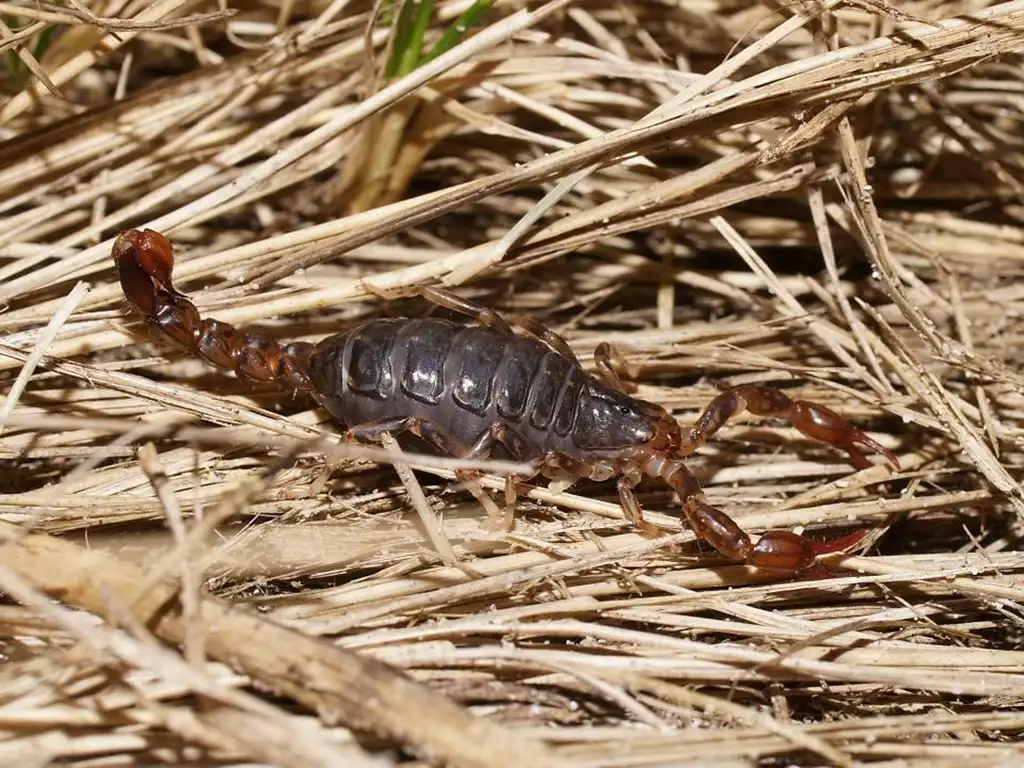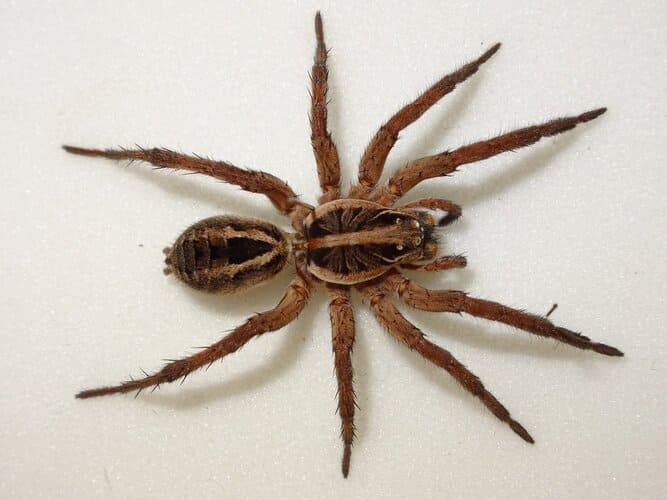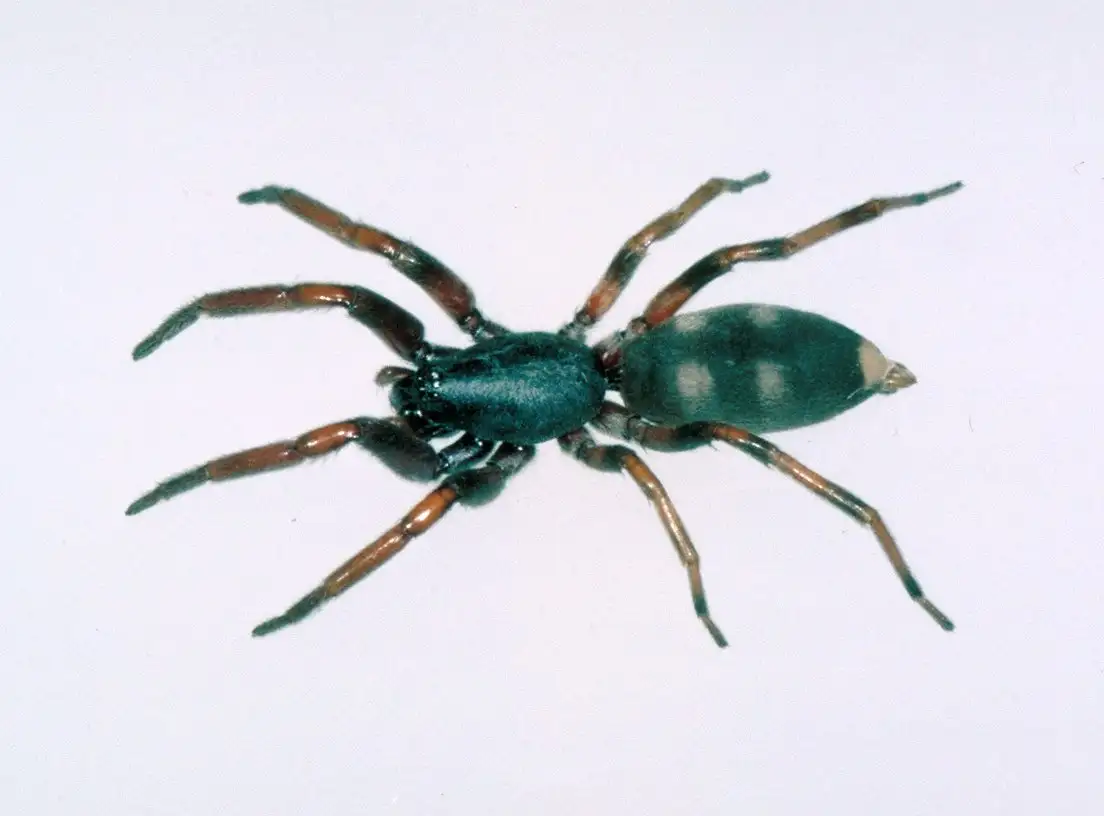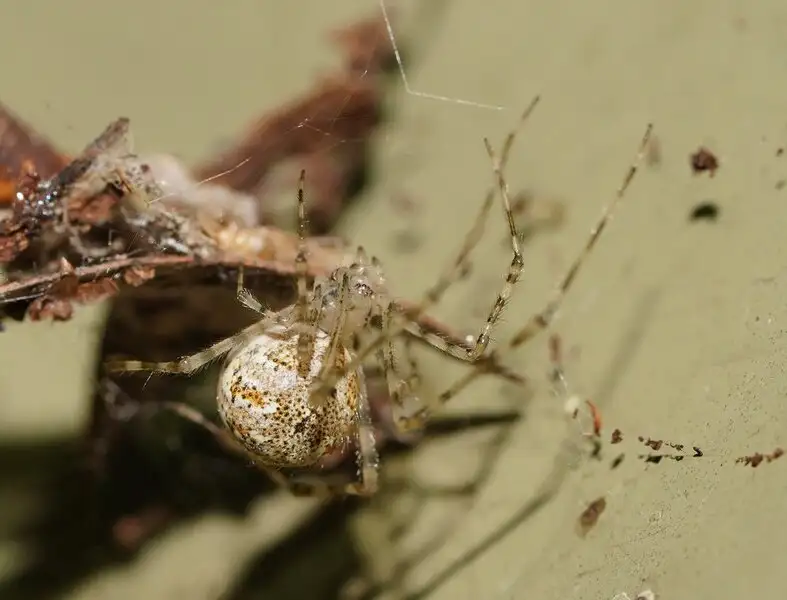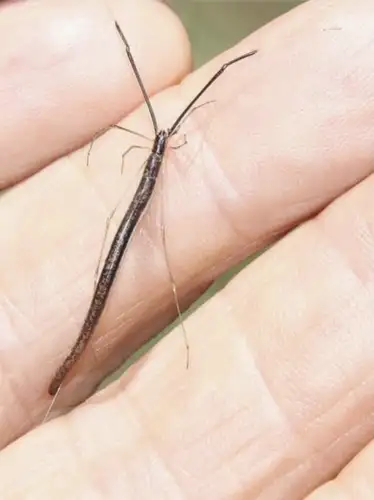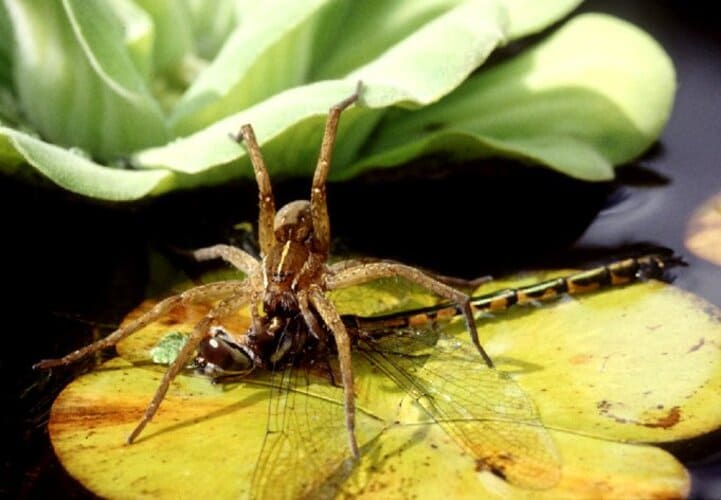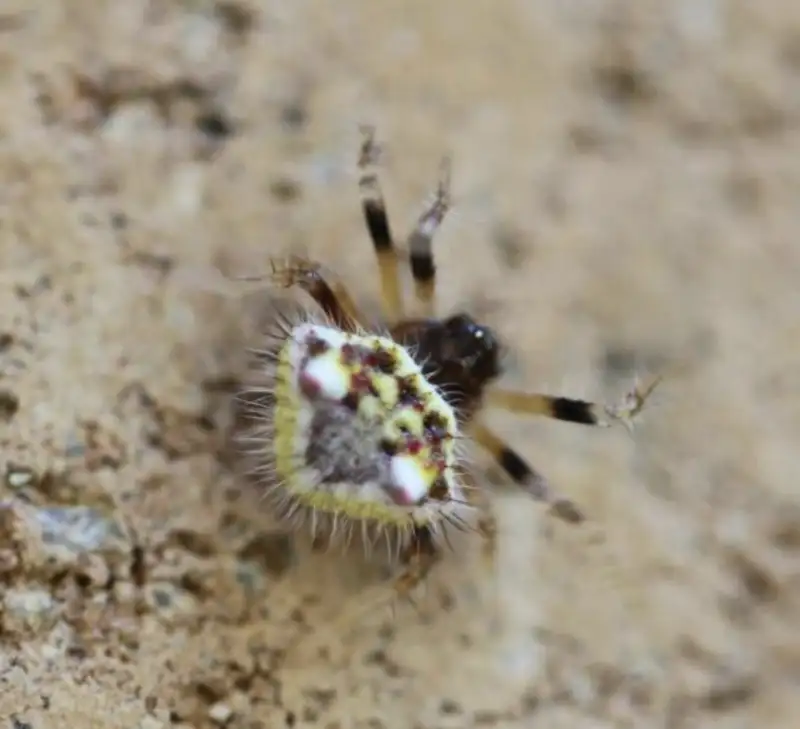Blattella germanica
IUCN
LCBasic Information
Scientific classification
- name:Blattella germanica
- Scientific Name:Blattella germanica,German cockroach, German cockroach, Blattella germanica
- Outline:Arthropoda
- Family:Insecta Blattaria Blatta
Vital signs
- length:0.2-3cm
- Weight:No verification information
- lifetime:27-90days
Feature
It is the most widely distributed and most difficult to control type of household pests in the world.
Distribution and Habitat
The German cockroach is the most widely distributed, most closely related to human life and most difficult to control important pest in the order Blattaria. It is distributed in tropical, subtropical, temperate and frigid zones throughout the world, and is widely distributed in Yunnan, Guizhou, Sichuan, Tibet, Guangxi, Guangdong, Fujian, Shanghai, Beijing, Shandong, Liaoning, Hunan, Hubei, Heilongjiang, Shaanxi and Xinjiang in China.
Appearance
Adult German cockroaches are oval with flat back and abdomen, and are divided into three parts: head, thorax, and abdomen. The smallest is only 0.2-0.5cm, and most are 10-30mm long. They are yellow-brown, reddish-brown, or dark brown. The length and color vary from species to species, and the body surface is generally shiny. Early nymphs are small and dark brown to black, wingless, and nymphs after the wings are formed have a distinct light-colored stripe in the center of the back. Cockroaches have a hypognathic head, chewing mouthparts, a pair of well-developed compound eyes, a pair of simple eyes (small and underdeveloped), 2 pairs of wings, leathery forewings, and membranous hindwings, but they rarely fly. They have 3 pairs of crawling legs of the same shape, with well-developed femurs, strong and powerful, and good at running. Males have a pair of abdominal spines on both sides of the rear edge of the last abdominal segment, while females have no abdominal spines, which can be used
Details
German cockroach (Blattella germanica) is the most widely distributed and most difficult to control type of household pests in the world.
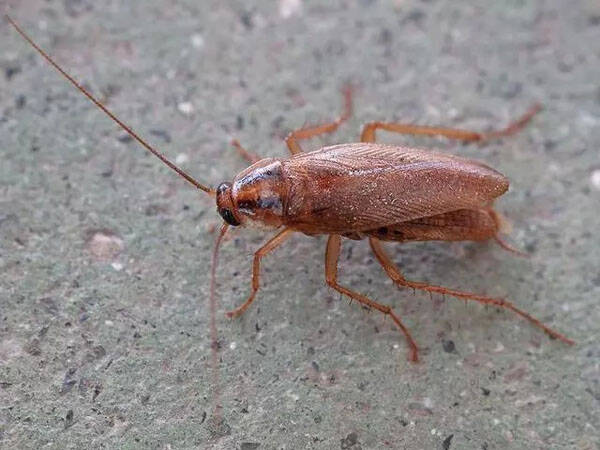
German cockroach originated in Africa with high temperature and high humidity, and still prefers to live in a relatively warm and humid environment. Nymphs have the same habits as adults and are negative phototaxis insects. They hide in warm, humid and dark hidden places during the day, such as cracks and corners in walls, ceilings, cabinets and tables; piles of debris, gutters, cracks between various plumbing pipes and power lines are all hiding places for German cockroaches. They come out at night to find food, water and mate. If you see German cockroaches during the day, it means that the cockroaches in this place have become a disaster, and the cracks that can hide are already full of insects or lack food and humidity.
German cockroaches are omnivorous insects. Domestic species not only like to eat clean food in residents' households, such as sugars, starch, meat, dairy products, etc., but also like to eat "food" in unsanitary environments, such as rotten food, human sputum and hair, etc., and have the bad habit of eating, defecating and vomiting at the same time. Water is more important to the survival of cockroaches than food. If there is food and water, adults can survive for more than one month; if there is no food and water, they will not survive for more than two weeks, and cannibalism will occur in the group. If there is no source of water and food, most German cockroaches will invade the non-food areas of certain buildings during the day to find sporadic food. In the warm season, German cockroaches are occasionally seen gathering near outdoor garbage, which is mainly caused by too many indoor groups or the use of insecticides.
German cockroaches are very active insects, preferring to survive in tight seams and inclusions, and are often mixed in vegetables, clothing, wood, cloth and other food and items and brought into homes or transported to other cities and countries, often spreading and invading in a "hitchhiking" manner.
German cockroaches are incomplete metamorphosis insects. They go through three stages in their life: eggs, nymphs and adults. Adults lay eggs, eggs mature into nymphs, and nymphs emerge into adults. The egg pods are curved and slender, shaped like sausages. After they are formed, they hang at the end of the female's abdomen. They are laid before hatching. Sometimes the egg pods hang at the tail end and begin to hatch. German cockroaches are the only indoor cockroach species that carry egg pods for a long time. Females can lay 4 to 8 egg pods in their lifetime, and each egg pod can hatch 30 to 40 nymphs. It takes 28 days from egg pod formation to hatching. Nymphs molt 6 to 7 times to become adults. After molting once, they grow one age. German cockroaches mature and can reproduce one week after becoming adults, with 2 to 3 generations per year. Under indoor conditions, it takes 40 to 125 days for the nymph stage to complete. Under unfavorable conditions or when the appendages of early nymphs are damaged, the stage may be extended to allow the injured body parts to recover and regenerate. The adult stage is about 5 to 8 months, which can be shortened at high temperatures. When there are no males, females can also lay eggs, but no nymphs have been seen to hatch.
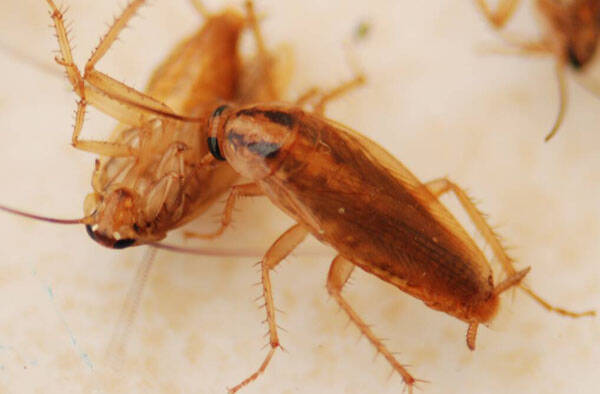
The integrated control of German cockroaches is to treat the pests and their breeding environment as a whole, and to use environmental, physical, chemical, and biological methods to control German cockroaches, and minimize the damage to humans and the environment.
(1) Monitoring of German cockroaches: Carefully and meticulously surveying the pest breeding environment and finding out the causes of pest breeding and their nests is half the battle for pest control. Most failures in the control of German cockroaches are due to the failure to find all the hiding places of German cockroaches in the environment and to deal with them thoroughly, resulting in a continuous flow of new German cockroaches that cannot be eradicated.
(2) Environmental transformation and physical control: Food, water and nests are the three basic conditions for the survival of German cockroaches. Taking measures such as keeping indoor and outdoor clean, controlling food and water, and filling various gaps and holes in the wall can significantly reduce the environmental capacity of pests and make it difficult for them to breed. German cockroaches usually move into the house with food and furniture in the summer. Therefore, the packaging and various sundries brought in should be carefully checked, and garbage should be removed in time to prevent the invasion of German cockroaches.
During the environmental survey, a vacuum cleaner can be used to capture German cockroaches gathered in the dark, which is conducive to the next step of prevention and control. Use sticky cockroach paper to monitor the places where German cockroaches are easy to move, which can not only capture residual pests, but also detect problems in time.
(3) Chemical control: Residual spraying and placing poison bait are the two basic methods of chemical control of German cockroaches. After residual spraying, the pesticides left on indoor surfaces can remain for more than 3 months and are difficult to remove [8]. Therefore, when controlling German cockroaches, we should avoid indiscriminate large-scale spraying on the ground, walls and ceilings, and focus on treating the places where German cockroaches move and live, especially the gaps near water sources and food. The formulations suitable for residual spraying include microcapsule suspension (CS), emulsion (EC), water emulsion (WP), suspension (SC), wettable powder (WP), etc.
Cockroach baits have been rapidly promoted due to their low environmental pollution, safe use and reliable effects. Cockroach bait formulations include ointments, gel baits, granular baits, bait boxes, etc., which are suitable for places that are sensitive to insecticides, such as schools, hospitals, and offices.
Fluorine hydrazone-containing cockroach-killing glue bait: Apply more points to cockroaches where they often appear, so that cockroaches will be chronically poisoned after eating the fluorine hydrazone-containing glue bait and die in the nest. It has an infectious and stomach-killing effect. The lasting effect is long, generally 3-6 months, but it must be prevented from getting wet. Fluorine hydrazone-containing cockroach-killing glue bait needs to be applied in small amounts, and each application point can be the size of a grain of rice, and the application point should be in the place where cockroaches often move. The lasting effect is very long, safe, efficient and convenient, and it is not easy to produce resistance, and the toxicity is transmitted to each other among cockroaches, causing the death of cockroaches in groups. When using poison bait, it must be applied in the gaps where German cockroaches gather or where they move. If the density is high, residual spraying should be carried out first, and after the density drops, poison bait should be used to consolidate the cockroach-killing results. Poison powder is also often used in the control of German cockroaches due to its good floating properties and long lasting effect. In particular, when dealing with the inside of some precision instruments or deep gaps that cannot be sprayed, the use of poison powder can achieve good results. Fumigants can be used to control German cockroaches in closed places such as cars, ships, and basements. The smoke has strong penetration and kills cockroaches thoroughly, but the disadvantage is that it has no lasting effect and must be coordinated with other control measures. Fumigants are highly polluting and dangerous to humans and animals. Safety should be paid attention to when using them.
(4) Biological control: The use of insect pathogens to control pests has the advantages of good safety and no pollution to the environment. It is especially suitable for controlling indoor urban pests. Periplaneta densovirus (PfDNV) is the only cockroach virus in the world that has been systematically studied. It can infect and kill Periplaneta densovirus without infecting vertebrates. Insect-specific neurotoxins (AaIT) and essential oils of certain plants also have a good killing effect on German cockroaches.
The basic method to prevent German cockroaches from developing resistance is to regularly rotate different types of insecticides, use poison baits to control low-density German cockroaches, avoid excessive abuse of insecticides, and promote integrated prevention and control measures.
German cockroaches can excrete strange-smelling secretions from different parts of their bodies, thereby changing the taste and spoilage of food; when the population density is high, these secretions will produce a specific smell in the places where they invade. The cockroach can not only bite and destroy food, medicinal materials, fiber fabrics, paper and cultural relics, but more importantly, it can also carry a variety of pathogenic bacteria, such as Shigella dysenteriae, Pseudomonas aeruginosa, Proteus, Salmonella, Salmonella typhi, viruses, molds, parasite eggs and protozoa, etc. Its excrement and shed epidermis can also carry allergens, which may cause transmission, causing people with allergic constitutions to have symptoms such as rashes, asthma, sneezing, etc., but it is not often associated with serious diseases. It has been reported in China that a variety of fungi, adenoviruses, enteroviruses, polioviruses, etc. were isolated from cockroaches, and liver surface antigens, worm eggs (roundworms, whipworms, pinworms, tapeworms), amoebas and flagellates and other pathogens were detected. In some extreme cases, it can also become a foreign body in the external auditory canal, and even rarely become a foreign body in the bronchus. In general, the large number of pathogens carried by German cockroaches pollute people's daily living environment, disturb people's normal life, affect people's physical health, and bring troubles to people's lives.
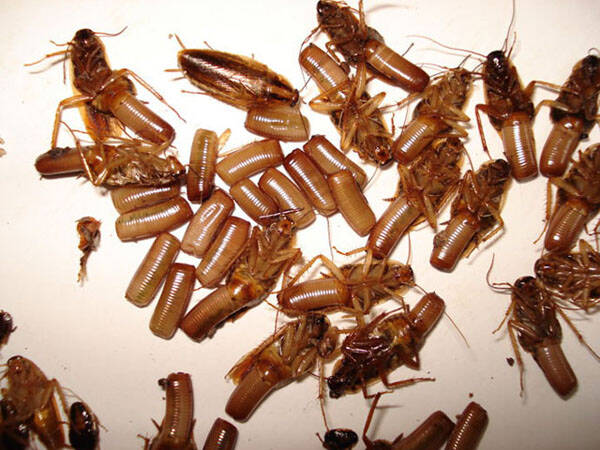
Difficult to control factors: (1) The eggs in the egg pods of German cockroaches are more than those of other indoor cockroaches. The egg pods of German cockroaches generally contain 30 to 48 eggs.
(2) The time required from egg hatching to sexual maturity is short. The Japanese cockroach takes 25 to 105 days, with an average of 33.5 days, the German cockroach takes 15 to 30 days, with an average of 28 days, and the American cockroach takes 24 to 100 days. In this way, the German cockroach reproduces faster than other species, so it has a high reproductive potential.
(3) The nymphs have a higher chance of survival than other species. Since the females can carry the egg pods on their bodies until the nymphs hatch, the nymphs avoid many unfavorable environments, which makes it possible for a large number of nymphs to hatch and have a high reproductive potential.
(4) German cockroach nymphs are small in size and can hide in narrow crevices, which is exactly what large cockroaches cannot do. These factors, combined with their feeding characteristics and behavioral habits, increase the survival chances of German cockroaches and maintain a high population.
(5) Its high reproductive potential is obviously conducive to the formation of resistance to pesticides.
Included in the fourth batch of the "List of Alien Invasive Species in China".

